- Kenmore refrigerator water filters
- Whirlpool refrigerator water filters
- Samsung refrigerator water filters
- GE refrigerator water filters
- LG refrigerator water filters
- Frigidaire refrigerator water filters
- KitchenAid refrigerator water filters
- Maytag refrigerator water filters
- Kenmore Elite refrigerator water filters
- Estate refrigerator water filters
- GE Profile refrigerator water filters
- Amana refrigerator water filters
- Bosch refrigerator water filters
- Dacor refrigerator water filters
- Electrolux refrigerator water filters
How to replace a garage door opener drive chain and cable assembly
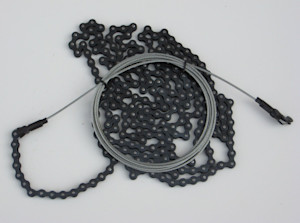
This DIY repair guide explains how to replace the chain and cable assembly on a chain-drive garage door opener. The chain and cable assembly connects to the trolley and drives the trolley along the rail to raise and lower the door. If the chain and cable assembly breaks, the door won't move. Replace the chain and cable assembly with the manufacturer-approved replacement part.
Follow the steps in this repair guide and video to replace the drive chain and cable assembly in Craftsman, Chamberlain and LiftMaster garage door openers.
Quick links
Video
Instructions
Tools required
Step ladder
Socket wrench set
Phillips screwdriver
Slot screwdriver
General-purpose grease
Work gloves
Repair difficulty
Time required
60 minutes or less
Repair difficulty
Time required
60 minutes or less
Replacing the chain and cable assembly on a garage door opener
This video explains how to replace teh drive chain and cable assembly on a garage door opener.
Instructions
- 01.
Disconnect power
Use a step ladder to access the garage door opener’s power cord and motor unit.
Unplug the garage door opener.
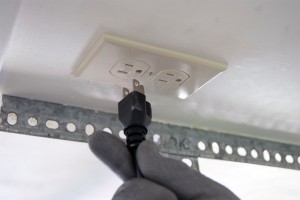
PHOTO: Unplug the garage door opener.
- 02.
Take the garage door opener down
Pull the emergency release rope to release the trolley from the garage door.
Shut the garage door if it's not already closed.
Remove the fastener ring from the straight door arm connected to the outer trolley.
Pull out the clevis pin while supporting the straight arm to disconnect the garage door from the outer trolley.
Lower the straight and curved arms and rest them against the garage door. Use a helper if necessary.
Open the light cover to access the wall control and safety sensor wires connected to the motor unit.
Take a digital photo of the wall control and safety sensor wires connected to the motor unit. You’ll refer to the photo later when reconnecting the wires.
Disconnect the wall control and safety sensor wires from the motor unit.
Close the light cover.
Remove the nuts, bolts and lock washers that secure the motor unit to the ceiling bracket.
Support the motor unit with one hand as you remove the last bolt from the ceiling bracket.
Carefully lower the motor unit down and rest it securely on top of the step ladder.
Climb down the step ladder and lower the motor unit down to the garage floor.
Move your step ladder by the garage door so you can remove the rail from the header bracket.
Remove the fastener ring from the header bracket clevis pin.
Pull the clevis pin out of the rail and header bracket while supporting the rail with one hand.
Lower the rail to the garage floor.
Tip: To avoid scratching a decorative garage door, remove the nuts, bolts and washers from the curved arm and carefully rest the curved arm against the door when disconnecting the garage door from the outer trolley.Tip: You may want to have a helper assist you when pulling the garage door opener down.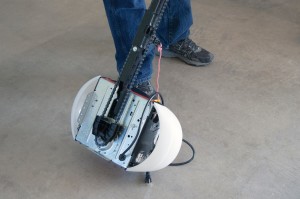
PHOTO: Take the garage door opener down.
- 03.
Remove the chain and cable assembly
Slide the outer trolley away from the inner trolley.
Mark the rail to indicate the position of the inner trolley so that you can reinstall it in the same place after replacing the chain and cable assembly.
Remove the outer nut from the trolley threaded shaft.
Pull the threaded shaft out of the trolley.
Pull the chain off the motor unit sprocket.
Pry off the master link clip-on spring from the master link cap on the trolley.
Pull off the master link bar and master link cap.
Remove the idler pulley nut and lock washer.
Pull out the idler pulley bolt and slide the idler pulley out of the rail window.
Pull the chain cable out of the rail window.
Disconnect the trolley threaded shaft from the chain by removing the master link clip-on spring, master link cap and master link bar.
Remove the chain and cable assembly.
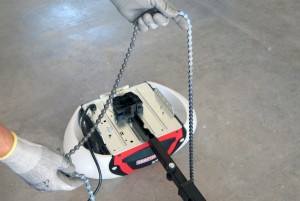
PHOTO: Remove the chain and cable assembly.
- 04.
Install the new chain and cable assembly
Lay the new chain and cable assembly beside the rail.
Grasp the end of the chain cable and pass approximately 12 inches of cable through the rail window.
Add general-purpose grease to the idler pulley center hole if it's dry.
Insert the idler pulley into the rail window behind the chain cable and line up the mounting hole.
Reinstall the idler pulley bolt and tighten it firmly with the lock washer and nut.
Make sure the idler pulley spins freely after tightening the nut.
Connect the chain cable to the retaining slot by pushing the pins of the master link bar up through the cable link and trolley slot.
Push the master link cap over the master link bar pins and past the pin notches.
Slide the clip-on spring over the master link cap and onto the pin notches until both pins are securely locked in place.
Position the inner trolley to the previously marked position on the rail.
Align the rest of the chain and cable assembly along the rail, routing the cable onto the idler pulley and threading the chain through the chain spreader and around the motor sprocket, making sure not to twist the chain.
Connect the trolley threaded shaft to the new chain by pushing the pins of the master link bar up through the threaded shaft mounting hole and the end link of the new chain.
Push the master link cap over the master link bar pins and past the pin notches.
Slide the clip-on spring over the master link cap and onto the pin notches until both pins securely lock in place.
Thread the inner nut up to the top of the trolley threaded shaft and reinstall the inner lock washer on the threaded shaft.
Making sure not to twist the chain, insert the trolley threaded shaft through the hole in the trolley. Using channel lock pliers, apply tension to the trolley.
Insert the lock washer on the trolley threaded shaft and loosely thread the outer nut onto the threaded shaft.
Tip: Have a helper push the inner trolley toward the threaded trolley shaft to apply more tension to the chain and cable, making it easier to thread the outer nut onto the trolley shaft.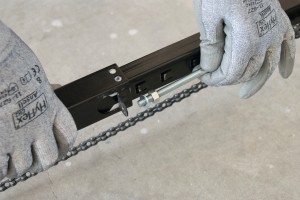
PHOTO: Connect the trolley threaded shaft.
- 05.
Tighten the chain
Tighten the outer nut to pull the trolley threaded shaft into the trolley, tightening the chain until the chain is about 1/4-inch above the base of the rail at its midpoint.
Tighten the inner nut against the trolley to secure the adjustment.
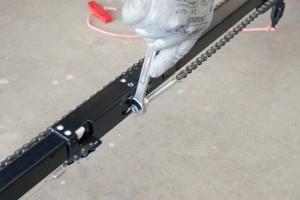
PHOTO: Tighten the chain.
- 06.
Reinstall the garage door opener
Reconnect the rail end to the header bracket using the clevis pin and fastener ring.
Position your step ladder under the motor unit ceiling bracket and carefully set the motor unit on top of the step ladder.
Climb the step ladder and reinstall the motor unit to the ceiling bracket using the nuts, bolts and lock washers.
Open the light cover to access the wall control and safety sensor terminals on the motor unit.
Using your digital photo for reference, reconnect the wall control and safety sensor wires to the motor unit.
Close the light cover.
Reconnect the straight door arm to the outer trolley using the clevis pin and fastener ring.
Re-engage the trolley.
Tip: Reconnect the curved door arm to the straight door arm using the bolts, lock washers and nut if you disconnected the curved arm from the straight arm when freeing the garage door from the outer trolley.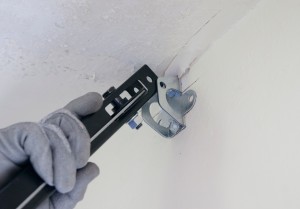
PHOTO: Reconnect the rail to the header bracket.
- 07.
Reconnect electrical power
Plug in the garage door opener.
- 08.
Adjust the travel limits
Run the garage door opener through a complete travel cycle to check upper and lower travel limits.
If the garage door doesn't close completely, adjust the down travel and cycle the door open and closed to test the adjustment. Continue to adjust the down travel until the door closes completely.
If the door doesn't open completely, adjust the up travel in the same manner.
Tip: Repeated operation of the garage door opener during travel limit adjustment may cause the motor to overheat and shut off. Wait 15 minutes to allow the motor to cool and then continue adjustments.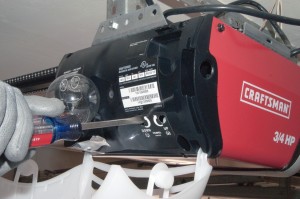
PHOTO: Adjust the travel limits.
Warning: Undertaking repairs or maintenance to appliances or power equipment can be hazardous. Should you choose to undertake repairs or maintenance, you are assuming the risk of injury to your person or property. In an effort to reduce the risk, use the proper tools and safety equipment noted in the applicable guide and follow all instructions. Do not proceed until you are confident that you understand all of the steps and are capable of completing the repair. Some repairs or maintenance, however, should only be performed by a qualified technician.
Most common symptoms to help you fix your garage door openers
Choose a symptom to see related garage door opener repairs.
Main causes: faulty logic control board, bad RPM sensor, broken gears in the drive system, bad drive motor…
Main causes: radio interference, weak remote batteries, sunlight interference with safety sensor beams, safety sensors n…
Things to do: check garage door travel, tighten brackets and fasteners, test safety sensors, check travel limits and for…
Main causes: garage door locked, damaged garage door tracks, up-force setting needs adjustment, RPM sensor failure, bad …
Main causes: neighbor's remote programmed at the same time as yours, faulty wall control wiring, bad wall control unit…
Main causes: garage door opener misaligned, travel limits need adjustment, bad travel limit switches, faulty logic contr…
Main causes: safety sensor beams blocked, safety sensors not aligned, downforce setting needs adjustment, damaged garage…
Main causes: loose fasteners, broken brackets, need preventive maintenance, worn drive gears, loose or worn belt, loose …
Most common repair guides to help fix your garage door openers
These step-by-step repair guides will help you safely fix what’s broken on your garage door opener.
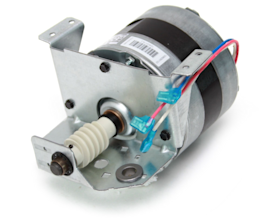
How to replace a chain-drive garage door opener motor
Get your garage door moving again by replacing a defective motor in your garage door opener.…
Repair difficulty
Time required
60 minutes or less

How to replace a belt-drive garage door opener motor
The garage door won't move if the motor is defective. Here’s how to fix it.…
Repair difficulty
Time required
60 minutes or less
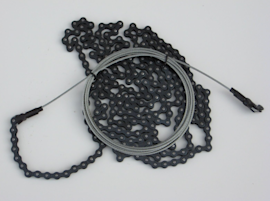
How to replace a garage door opener drive chain and cable assembly
If your garage door won’t move, the chain and cable assembly on your garage door opener could be broken. Follow these st…
Repair difficulty
Time required
60 minutes or less
Effective articles & videos to help repair your garage door openers
Use the advice and tips in these articles and videos to get the most out of your garage door opener.

Learn about all the convenient features on our Sears PartsDirect website that make your parts purchases easier.…

Get answers to frequently asked questions about Sears and Sears PartsDirect.…
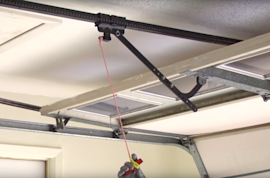
Learn how to open a garage door manually if power to your garage door opener fails.…
